'I remember too': Meet the group resurrecting lost history of Phoenix's bulldozed barrios
On a warmly lit stage at the Arizona Heritage Center just outside of Papago Park, Gil Bivens and his team are honored by the Arizona Historical Society. A video of the ceremony, which took place in September 2023, shows Bivens as he thanks his team onstage: Irma Payán, Ray Martinez and Biven’s wife, Joann Bivens.
Behind them, a collection of images showcasing their efforts from the previous months.
Bivens, the founder of Arizona Barrio Stories, received the 2023 Al Mérito Award in honor of the work he and the rest of his team have been producing — documenting stories of Mexican and Latino community members, often from barrios of Arizona that no longer exist.
The award is meant to recognize individuals and organizations serving as role models in the preservation of Arizona’s rich history.
“Mexicans and Mexican Americans have played a big role in the formation and organization of many Arizona cities, including Phoenix. Yet, the stories of their contributions to the state were often either left out of history books or have vanished from the historical record,” reads a release from the Arizona Heritage Center.
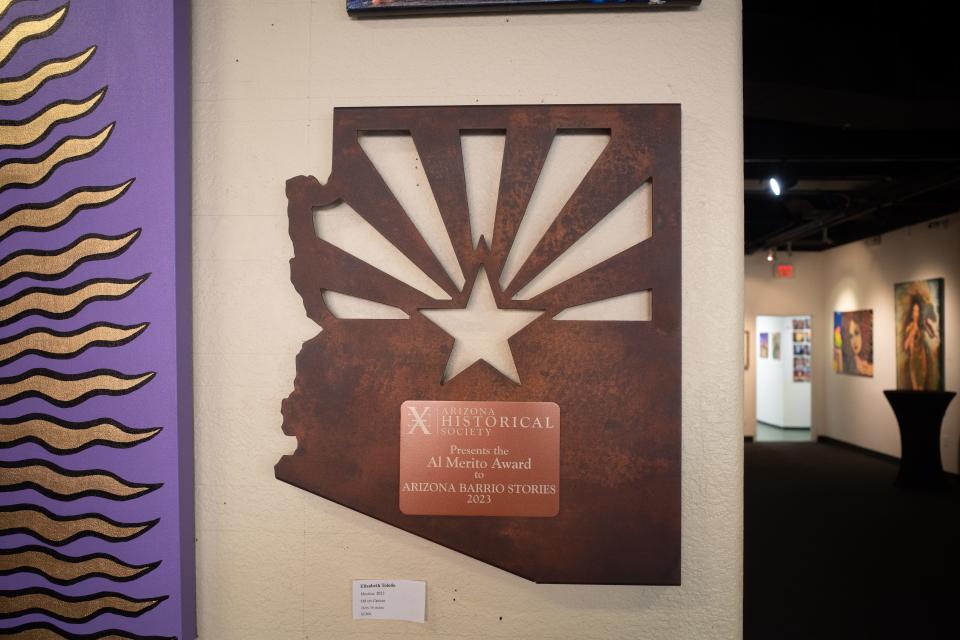
This recognition is one of many that the Arizona Barrio Stories has garnered to date, as the digital space continues to serve as a home for Latino stories.
In an interview with The Arizona Republic, Bivens described Arizona Barrio Stories as a traditional home, where tales exchanged generate a dialogue and community members share their memories, furthering the group’s collective cultural understanding.
What began as a Facebook group in 2020 with a few hundred members, has since grown into a digital community of over 36,500 members and has expanded its reach to YouTube, radio and television. In December 2023, Bivens announced the acquisition of Latino USA TV, a channel on Roku TV where the organization intends to share its video storytelling productions.
Bivens was inspired to do storytelling work by his upbringing in the barrios of east Phoenix, where he grew up delivering newspapers.
“I knew absolutely everybody. I knew the dog’s name. I knew the cat’s name,” Bivens said. “This was where all of us connected. This was our childhood story.”
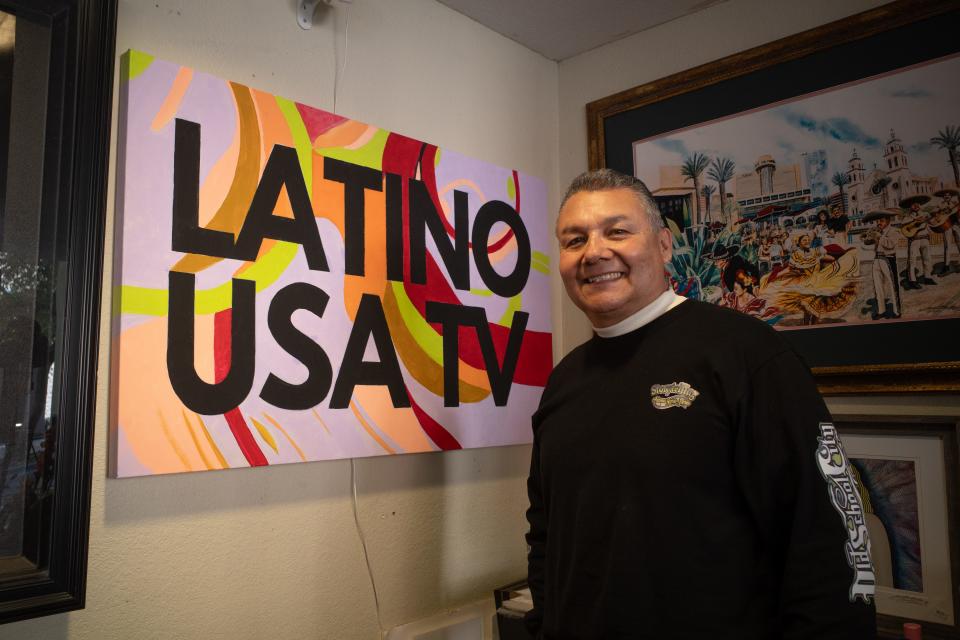
But in 1976, Bivens — and all the other residents of the Golden Gate neighborhood where Phoenix Sky Harbor International Airport now stands — would get a notice in the mail. The City of Phoenix was practicing its right to Eminent Domain, the government’s ability to take people’s property, even if they don’t want to sell.
They would have to move.
“These were the streets we grew up in,” Bevins said. “We were forced from a community.”
“My heart was broken.”
Bivens was in his early teenage years when his family was forced to relocate. This same experience, of losing his home and a state not knowing this history, is at the heart of Arizona Barrio Stories.
A space for storytelling and story-preserving
Arizona Barrio Stories boasts members of different generations that represent diverse perspectives: retired educators, former local representatives, community organizers and leaders. All share an interest in better understanding the places and traditions in Arizona that have shaped them.
The number of Hispanic and/or Latino-identifying people has grown exponentially in Arizona, with 2020 data from the U.S. Census approximating 2,192,253. Sixty years ago, that number was projected to be 194,021, according to reports from the U.S. Census Bureau. Their presence in Arizona, however, weaves back to before statehood, given that this territory once belonged to Mexico.
While the ASU Chicano/a Research Collection has for years preserved Latino stories of Arizona, tapping into social media to help everyday folks tell their stories changed the game.
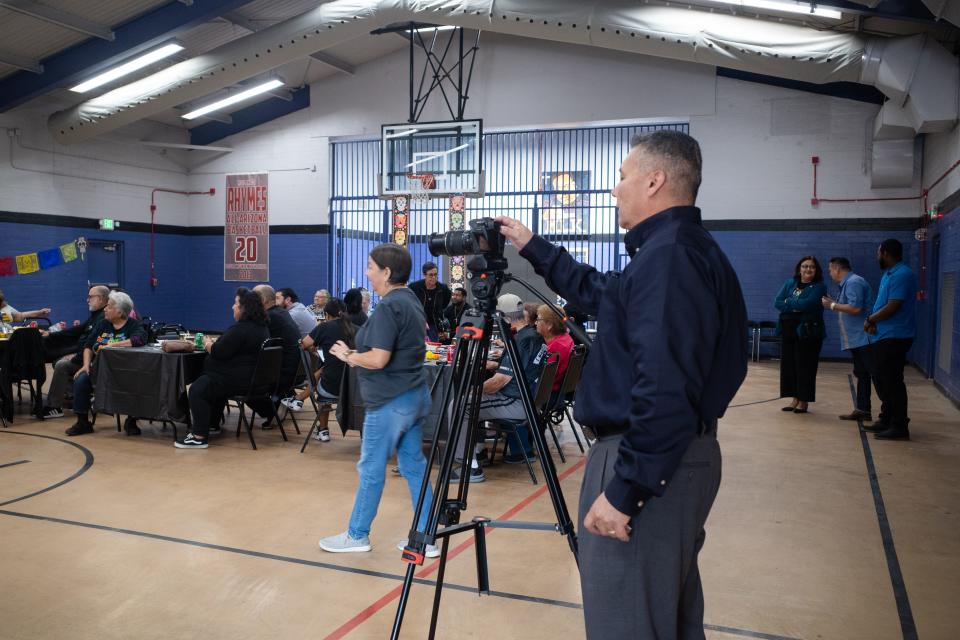
The Facebook page is topped with a black and white image of an old concert venue advertisement for the Red Dog, an old concert venue in Scottsdale. The photo was added on Feb. 18, and by the second day, it had garnered more than 50 comments.
“I loved the Red Dogg,” one user wrote.
Another shared an image of her husband in The Syndicate, a band from the 70s. “I didn’t know him yet because I was only 12 years old,” she said with a laughing emoji, adding that they would play at a local bar called the Satin Doll.
People recount their memories of attending concerts at Arizona music venues that are no longer. Other images are shared.
This kind of exchange is a regular occurrence within the Arizona Barrio Stories Facebook space.
Arizonans of all walks of life share photos and memories made in neighborhoods across the state, like Cuatro Milpas in central Phoenix, mining communities in Douglas and old adobe barrios, like Barrio Anita, in Tucson.
But photos weren’t always as bountiful on Arizona Barrio Stories’ feed. It's something that Irma Payán noticed when she first joined the group in 2020.
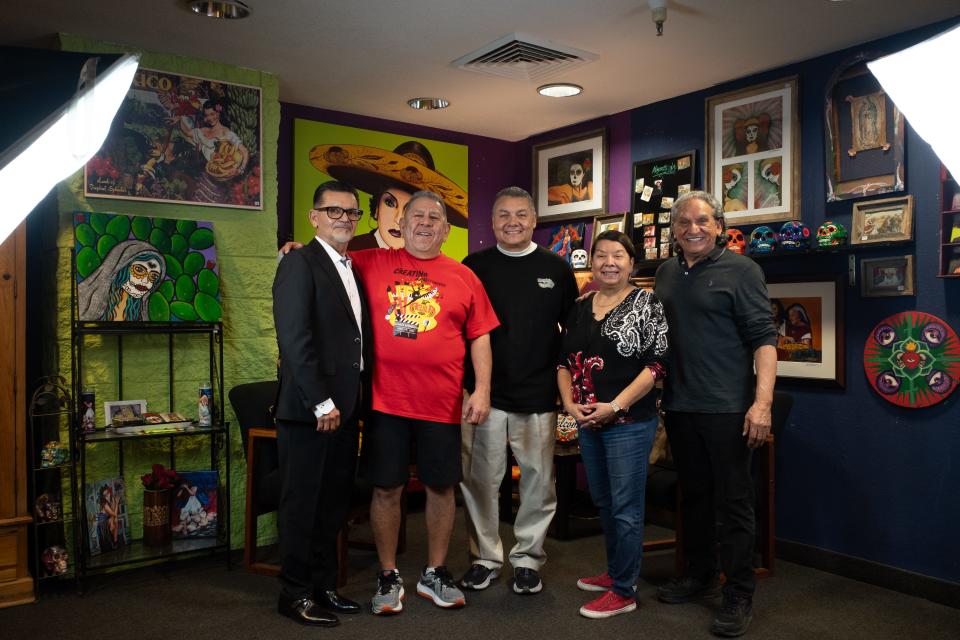
'I remember too, but I got pictures'
Most of the posts on the Facebook page that Payán saw were framed as questions, asking whether or not people remembered specific businesses or events. There weren’t many stories being shared, she said.
Then Payán came across a post that asked, “Do you remember cruising at Encanto Park?” referring to the park off 15th Avenue and Encanto Boulevard in central Phoenix. Payán read the comments, filled with people sharing their own stories of driving around the park.
“I thought to myself, ‘I remember too, but I got pictures,’” she told The Republic.
Payán unboxed some images she had from that park, filled with young people hanging out and enjoying themselves. She wrote up a caption and posted a reply.
Then she did it again, but this time it was about how people would decorate their cars with tissue flowers during their weddings.
And she kept commenting.
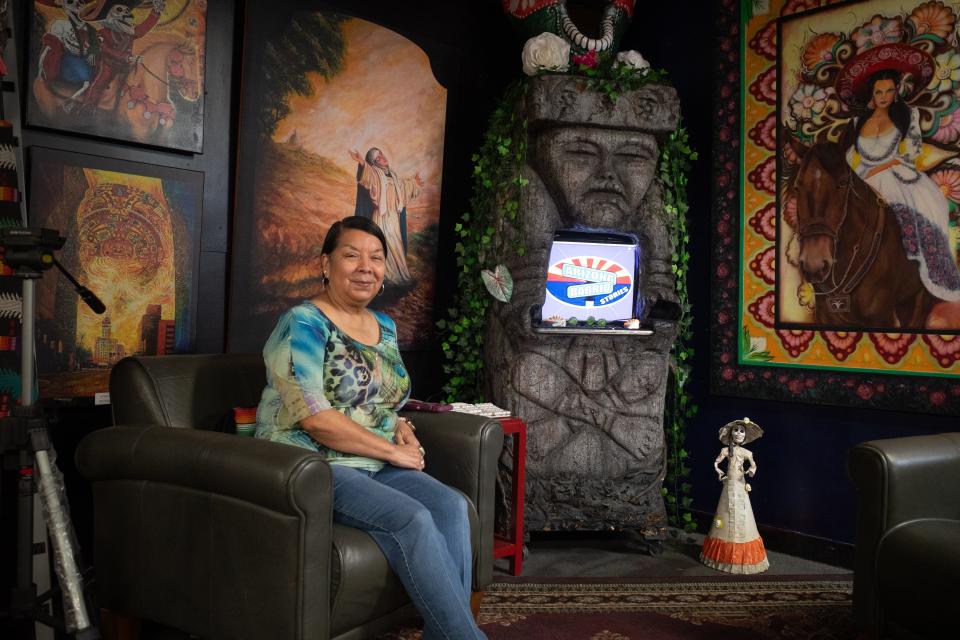
Eventually, her comments were noticed by Bivens. They began by exchanging messages and learning of each other’s backgrounds.
Payán was an educator for 33 years in south Phoenix at V.H. Lassen School. After she retired, she began working with the ASU Chicano/a Research Collection. Her extensive assortment of photos — and interest in sharing them — led her to attend workshops where she developed her skills as an archivist.
Bivens asked Payán if she had any class pictures of the kids she taught.
She sent him 33.
“Then he said, ‘Well, do you have any pictures of yourself when you were a kid?’ I didn't know what or where he was going (with this). I sent him a couple of those," Payán shared.
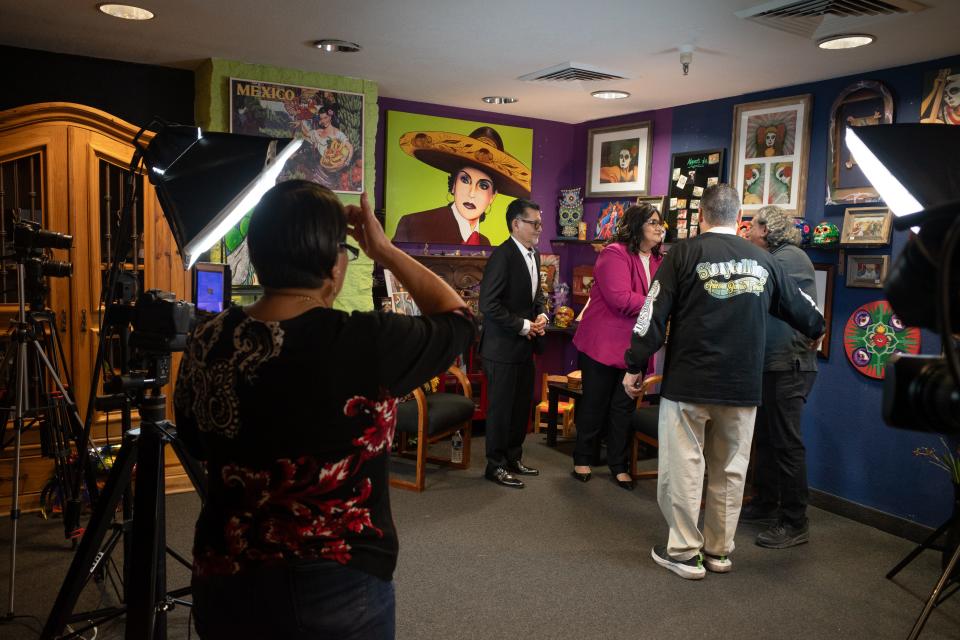
Bivens was making a video about Payán to share on Arizona Barrio Stories, the first of its kind for the Facebook group. He thanked Payán for sharing her memories. He wanted more people to start doing the same, so he asked Payán if she would be interested in helping him run the group.
Payán has been working as a volunteer ever since. She is joined by five others helping host shows, work cameras and moderate the Facebook group. While run entirely by volunteers, Arizona Barrio Stories has pulled in dollars from sponsors like the Guitérrez Law Firm and partnered with organizations like Chicanos Por La Causa to help with preservation and storytelling efforts.
Payán now hosts a regular segment for Arizona Barrio Stories where she interviews members of the community.
“When it comes to Arizona Barrio Stories, there's a lot of people out there. They don't know their roots. They don't know their history,” Payán said. “Being a teacher, I think it's important to let people know about their past.”
An Arizona Barrio Stories love connection
Payán and other volunteers are instrumental in sharing these stories and in helping members reminisce, make connections.
One of the stories Payán remembers fondly is that of a love connection that took over 60 years to spark.
In 2022 Armando “Dan” Reyes and Ramona Barraza were guests on Payán’s show. The interview, posted on Arizona Barrio Stories' YouTube channel and Facebook group, retells Dan and Ramona’s love story.
During taping, Dan handed a note over to Payán. It read, “I am going to propose to Ramona. Right now. Ok?”
Dan had been crushing on Ramona since the seventh grade when they both lived in the Golden Gate barrio. But she didn’t know. Life took them in separate directions; they both married, had kids and, by their early 70’s, both were widowed.
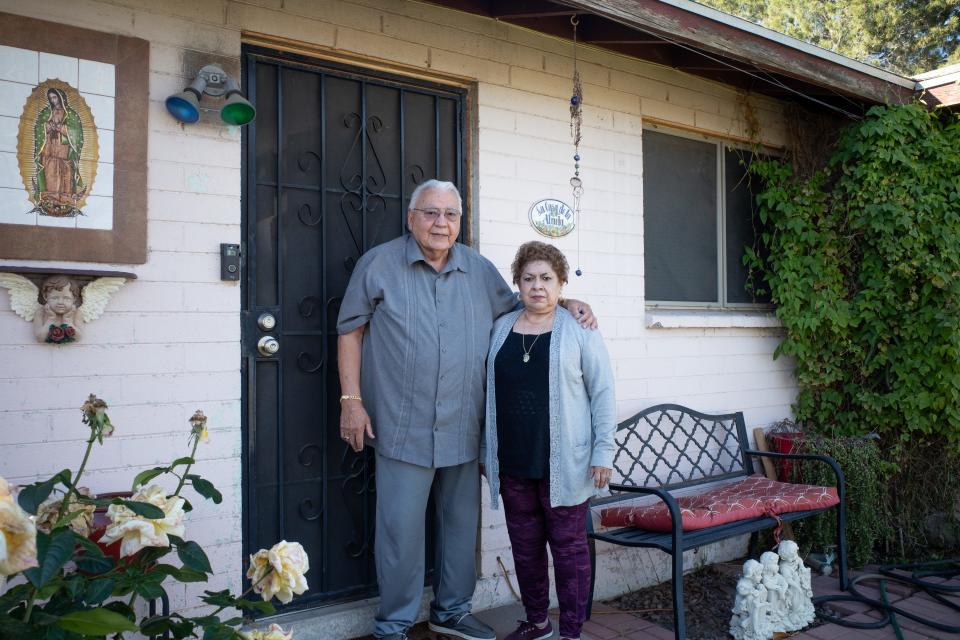
While living in Las Vegas, Dan found Arizona Barrio Stories. He was intrigued by all the accounts shared about his former home. A family historian himself, he had his collection of records he was eager to share, including the seventh-grade class picture that he kept not far from reach.
He posted it, asking the Arizona Barrio Stories community about Ramona. And 63 years and a full life later, he found her.
The two just celebrated their first wedding anniversary on Feb. 4, and credit Arizona Barrio Stories as the reason they were able to find each other again.
A community space and a vehicle for healing
Bivens' experience of losing his home is one that many share, but not one widely known. Arizona Barrio Stories exists to tell those stories, he said.
“The motivation was to pay tribute to a lot of the vanishing neighborhoods that were taken away from us by the city,” explained Bivens. “A lot of us were displaced, and we were forced to relocate to other areas.”
Phoenix, like many other major cities, has a history of cutting through Black and Brown neighborhoods to make way for new infrastructure. The city’s growth birthed major highways and Phoenix Sky Harbor International Airport.
The airport, now familiar to Phoenicians, occupies an area once home to families of Mexican and Mexican-American people with a rich sense of identity.
“It was very traumatizing for a lot of families who had lived in those neighborhoods for generations,” Bivens said.
The wound of losing his community is a scar that remains visible nearly 50 years later. For Bivens, Arizona Barrio Stories has been a vehicle for healing.
“One of the things that struck me further in my life… me not being able to take my kids to the community that I grew up with. To the community that molded me, to the community that made me who I am today,” Bivens said.
“My thoughts inspired me to make sure that those empty lots weren't forgotten about.”
Have a question you need answered? Reach the reporter at rromeroruiz@gannett.com. Follow him on X, formerly Twitter @raphaeldelag.
This article originally appeared on Arizona Republic: Arizona Barrio Stories: This Facebook group centers Latino history

